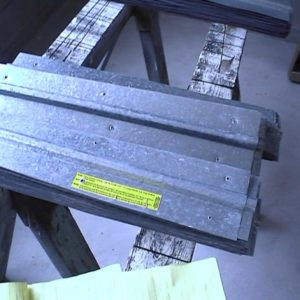Just redid a part of a RH job in N. Mich as was wondering if anyone has seen these transfer plates. The room was 264 sq.ft and had under 300′ of 1/2″ hePex and had 120′ of these plates. Right from the get go the whole system was undersized, but Steel Transfer Plates? There is a sticker on one of the 72 plates that says “made in Canada
Discussion Forum
Discussion Forum
Up Next
Video Shorts
Featured Story

The crew talks about work start times, fire-resistant construction, fixer-uppers, building Larsen trusses, and AI for construction.
Related Stories
Highlights
"I have learned so much thanks to the searchable articles on the FHB website. I can confidently say that I expect to be a life-long subscriber." - M.K.
Fine Homebuilding Magazine
- Home Group
- Antique Trader
- Arts & Crafts Homes
- Bank Note Reporter
- Cabin Life
- Cuisine at Home
- Fine Gardening
- Fine Woodworking
- Green Building Advisor
- Garden Gate
- Horticulture
- Keep Craft Alive
- Log Home Living
- Military Trader/Vehicles
- Numismatic News
- Numismaster
- Old Cars Weekly
- Old House Journal
- Period Homes
- Popular Woodworking
- Script
- ShopNotes
- Sports Collectors Digest
- Threads
- Timber Home Living
- Traditional Building
- Woodsmith
- World Coin News
- Writer's Digest




















Replies
Can I bump this myself, I would like some input.
Hi,
Don't know, but steel has about 1/5the thermal conductivity of aluminum, so for equal performance to aluminum I would think they would have to be a lot thicker.
Gary
I just have never seen galv steel heat transfer plates, and why is there a sticker on only one? It says keep the plates 12" from loops and cross overs indicating that they are made for tubing, but then again I was wondering if someone took a sticker from somwhere else.
Just another thought. Is the edge of the plate that contacts the tubing sharp? If so, I'd buff each one to prevent abrasion of the tubing.
I did NOT put the steel plates back, I used Joist Trak. The plates did not even have full contact with the hePex, when the plate was attached to the sub-floor you could easily pull the tubing thru.
Makes you wonder ... all the effort to make those and then they do a crummy job. Why bother?
That was the story of the whole job.
I take it this was client driven stuff where the client got some possibly half baked ideas/products and wants to try to apply them. Good creativity, but it often gets sidetracked into misapplication.
Actually, this was done by a lic heating contractor and it passed inspection. Seems like in Mich your heating plant only has to keep your house 66 degrees (measured 3' off the floor) when it is 12 degrees outside. Pretty much in the dark ages IMHO.
Sounds like an interesting idea to me. Steel is cheaper than aluminum. It has less conductivity than aluminum, but it doesn't have full contact with the heat pipes so it's acting as a reflector, allowing the heat to radiate directly from the PEX to the subfloor.
Probably not as efficient as aluminum plates conducting heat to the subfloor, but it seems like it would be effective nonetheless. Cost/benefit thing--less money up front for slightly reduced performance.
Maybe less upfront $, but with RH are you looking at upfront or reduced cost and efficiency? When you look at this entire job it is a case of the contractor getting by with just barely the minimum. 1' of tube/sq ft of living space, and 40% plate coverage. The house consumed $700 of propane in the month of Dec. The zone that this room was on ran 45 min of each hour and the tile floor temp was only 68 degrees. Re-tubed and re-plated and the floor temp is up to 81 degrees and the boiler is running less than 20 min/hour.
I'll stick with aluminum in that case!